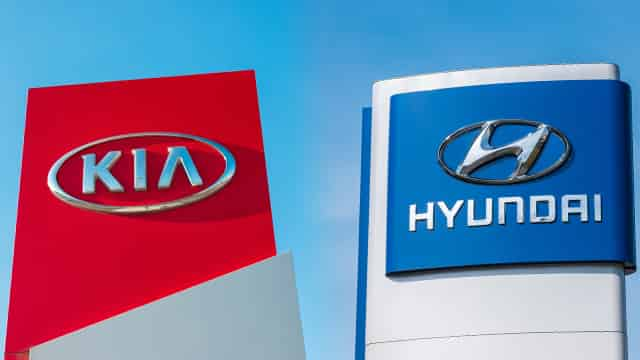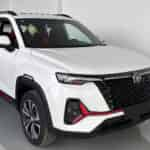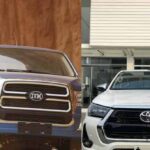

Kia and Hyundai: Unraveling the Relationship Between Two Korean Automotive Giants
The Rise of Kia and Hyundai in the Automotive Industry
Kia and Hyundai have made quite the impact in the automotive world, steadily climbing the ranks and giving established brands like Toyota and Honda a run for their money. With flagship models such as the Kia Telluride, Hyundai Sonata, and Elantra, they have piqued the interest of car enthusiasts worldwide. Over the years, these two South Korean automakers have experienced remarkable growth and success. But the burning question remains: are Kia and Hyundai under the same corporate umbrella?
The Emergence of Kia and Hyundai in Nigeria
In Nigeria, Kia and Hyundai have been steadily gaining ground. Initially perceived as brands catering exclusively to budget-conscious buyers, they have now become household names in the Nigerian car market. Their ascent in Nigeria is unprecedented, and it begs the question: with both hailing from South Korea, offering comparable quality, and rising simultaneously, are they cut from the same cloth? Let’s delve into the story of these automotive giants.
Which of the Brands Came First?
Kia traces its origins back to 1944 in Korea, as documented by the Kia Corporation’s Wikipedia page. In contrast, Hyundai Engineering and Construction Company’s inception dates back to 1947, according to the Hyundai Motor Company’s Wikipedia. Hyundai Motor Company, the automotive arm, didn’t come into existence until a significant time later, in 1968. Thus, it’s evident that Kia was the pioneer in this automotive saga.
Kia’s journey led it through decades of production and sales, collaborating with other major automakers like Ford and Mazda. However, a pivotal moment in the narrative occurred in 1997 when Kia filed for bankruptcy during the tumultuous Asian financial crisis. This marked the turning point in the intertwined story of Kia and Hyundai.
Hyundai, on the other hand, took its initial steps into the automotive world with the Cortina, a vehicle produced in collaboration with Ford, in 1968. This partnership ultimately culminated in Hyundai’s groundbreaking achievement—the production of the first entirely South Korean-engineered and produced car, the Pony, in 1975. In 1998, Hyundai acquired a controlling 51% stake in Kia Motor Corporation (now known as Kia Corporation), leading to the formation of the Hyundai Motor Group.
Are Kia and Hyundai From the Same Manufacturer?
In the strictest sense, Kia and Hyundai do not share the same parent company. Rather, they can be likened to corporate siblings, with Hyundai Motor Group assuming the role of the parent company overseeing both brands. While it’s true that models like the Kia Telluride and Hyundai Palisade share platforms and underpinnings, they are distinct brands that operate independently.
In an intriguing development, by 2013, Hyundai Motor Group had reduced its ownership stake in Kia. However, this change in ownership structure did not impede the progress of both brands within the Hyundai Motor Group. They continued to churn out vehicles, consistently earning accolades and awards year after year.
Since 2015, Kia has acquired partial ownership in various Hyundai Motor Group subsidiaries. Today, although they are not the same manufacturers, Hyundai and Kia share a common vision and direction in the ever-evolving landscape of the automotive industry. The future of mobility is the driving force that unites these two automotive giants.
The Hyundai-Kia Synergy: A Closer Look
While Kia and Hyundai maintain their separate identities and distinct lineups, their synergy within the Hyundai Motor Group is undeniable. This section explores the various facets of their collaboration and how it has shaped the automotive landscape.
1. Shared Platforms and Technology
One of the most apparent manifestations of the Hyundai-Kia partnership is the sharing of platforms and technology. Both brands leverage the research and development resources within the Hyundai Motor Group to create innovative and competitive vehicles. This collaboration allows them to deliver a wide range of vehicles that cater to diverse consumer preferences.
2. Competition and Innovation
Competition often fuels innovation, and the friendly rivalry between Kia and Hyundai is no exception. With both brands striving to outdo each other in terms of design, performance, and technology, consumers are the ultimate beneficiaries. This competitive spirit has driven advancements in safety features, fuel efficiency, and overall vehicle quality.
3. Global Reach
The Hyundai-Kia synergy extends beyond South Korea’s borders. Together, they have established a significant global presence, with manufacturing facilities, research centers, and sales networks spanning the globe. This global reach enables them to tap into various markets and adapt to regional preferences, further solidifying their positions as formidable players in the automotive industry.
4. The Electric Revolution
As the world shifts towards electric vehicles (EVs), both Kia and Hyundai are at the forefront of this electric revolution. They have developed a range of electric and hybrid vehicles, including the popular Kia Niro EV and Hyundai Kona Electric. By sharing their electric vehicle technologies, they are contributing to the growth of the EV market worldwide.
The Independent Paths of Kia and Hyundai
Despite their collaborative efforts and shared resources within the Hyundai Motor Group, Kia and Hyundai maintain their distinct identities and unique selling points. This section delves into the individual trajectories of these two automakers.
Kia: The Design-Driven Brand
Kia has made a name for itself as a design-centric brand, focusing on aesthetics, innovation, and user-friendly technology. The Kia Telluride, a flagship model, is a prime example of Kia’s commitment to striking design and high-quality interiors. Kia has also been recognized for its sleek and modern vehicle designs, appealing to a younger demographic of car buyers.
In recent years, Kia has diversified its portfolio with the introduction of sportier models like the Stinger, challenging traditional perceptions of the brand. With a growing reputation for reliability and style, Kia continues to attract a loyal customer base.
Hyundai: The Value-Oriented Brand
Hyundai, on the other hand, positions itself as a value-oriented brand, offering a balance between affordability and quality. Known for its comprehensive warranties, Hyundai provides peace of mind to budget-conscious consumers. The Hyundai Sonata and Elantra have been consistent performers in their respective segments, offering practicality and value for money.
Moreover, Hyundai has made strides in the SUV market with models like the Hyundai Tucson and Santa Fe, catering to the ever-growing demand for SUVs. While maintaining competitive pricing, Hyundai has also invested in technology and safety features, ensuring its vehicles remain competitive in the market.
The Future of Kia and Hyundai: A Unified Vision
As Kia and Hyundai continue to chart their respective paths in the automotive industry, they share a unified vision for the future—a vision that revolves around sustainability, innovation, and electrification.
Sustainability and Green Initiatives
Both brands are committed to reducing their environmental footprint. They are investing heavily in eco-friendly technologies, with plans to introduce more electric and hybrid models in the coming years. This commitment aligns with global efforts to combat climate change and transition to cleaner forms of transportation.
Innovation and Technology
Kia and Hyundai are at the forefront of automotive innovation. They are actively exploring autonomous driving technologies, connected car solutions, and advanced safety features. By embracing cutting-edge technology, they aim to enhance the driving experience and safety of their customers.
Electrification and Beyond
The shift towards electric mobility is a focal point for both Kia and Hyundai. They are dedicated to expanding their electric vehicle lineups, with ambitious plans to offer a variety of electric options to meet diverse consumer needs. Additionally, they are exploring hydrogen fuel cell technology, paving the way for a sustainable future in the automotive industry.
Conclusion: The Unique Bond of Kia and Hyundai
In the ever-evolving landscape of the automotive industry, Kia and Hyundai stand as shining examples of collaboration and competition. While they may not share the same manufacturer, they share a common purpose—to provide consumers with innovative, reliable, and sustainable transportation solutions.
Kia, with its design-centric approach, appeals to those seeking style and modernity, while Hyundai, the value-oriented brand, caters to budget-conscious buyers without compromising on quality. Together, they form a dynamic duo within the Hyundai Motor Group, driving each other to greater heights while working towards a greener, more connected automotive future.
In summary, Kia and Hyundai may have distinct brand identities, but their journey is intertwined, creating a unique bond that continues to shape the automotive landscape for years to come.
Add a comment Cancel reply
Categories
- Biography (4)
- Car Reviews (29)
- Car Tips (42)
- Classic Cars (43)
- Net Worth (12)
- Transportation (19)
Recent Posts
Related posts


Toyota Camry vs. Honda Accord: Which Is Better for 2021?

Best Toyota Corolla Model Years to Buy as Tokunbo








